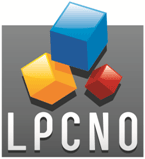QUANTUM LIGHT VIA RYDBERG EXCITONS
CHEMISTRY & GREEN CHEMISTRY

Lab: LPCNO
Duration: NanoX master Internship (8 months part-time in-lab immersion)
Latest starting date: 02/01/2025
Localisation: Lab name LPCNO
Postal address Bat.27. 135 avenue de Rangueil.
31077 Toulouse - FRANCE
Supervisors:
Pierre FAU, Lise-Marie LACROIX lmlacroi@insa-toulouse.fr
Thomas BOULIER boulier@insa-toulouse.fr
This research master's degree project could be followed by a PhD
Work package:
This interdisciplinary internship project (chemistry-physics) aims to advance the state of the art in the
creation and use of emerging synthetic quantum materials. In particular, cuprite (Cu2O) is a remarkable
semiconductor that presents excitons (bound electron-hole pairs) of gigantic size (> 1000x larger than
normal), called "Rydberg excitons". By analogy with their atomic cousins (Rydberg atoms) and their many
successes for quantum technologies, Rydberg excitons represent an emerging platform with high
potential for producing quantum devices integrated into a semiconductor. However, currently only
natural materials are of sufficient purity for such devices. These natural crystals are hard to structure and
increasingly rare. Finding a chemical synthesis route to synthesize high-purity artificial Cu2O, which can
also be structured at will, is therefore a major challenge for quantum technologies based on Cu2O .
The objective of this multidisciplinary chemistry-physics internship will be to explore two routes
for the synthesis of Cu2O. The first is based on the direct growth of Cu2O microcrystals in hydrothermal
conditions (synthesis in high-pressure aqueous media). These conditions tend to produce crystalline
particles with well-defined exposed facets. In parallel, initial tests will be conducted on the synthesis of
metallic copper nanoparticles using an organometallic approach. This method, developed in the team,
allows for an extremely compact copper deposit. A controlled oxidation treatment will then be conducted
to reach the targeted Cu2O phase. The crystals/particles obtained by these two methods will be
characterized by electron microscopy and X-ray diffraction.

References:
References: [1] Saffman, M et al. “Quantum information with Rydberg atoms.” Reviews of modern physics 82.3 (2010): 2313. [2] Peyronel, T, et al. "Quantum nonlinear optics with single photons enabled by strongly interacting atoms." Nature 488.7409 (2012): 57.[3] Kazimierczuk, T, et al. "Giant Rydberg excites in the copper oxide Cu2O." Nature 514.7522 (2014): 343.
Areas of expertise:
Chemical synthesis, X-Ray diffraction, Transmission Electron Microscopy
Required skills for the internship:
Chemistry, Physics, Nanotechnologies or Materials Sciences. Curiosity and
scientific rigor. Communication and writing skills
